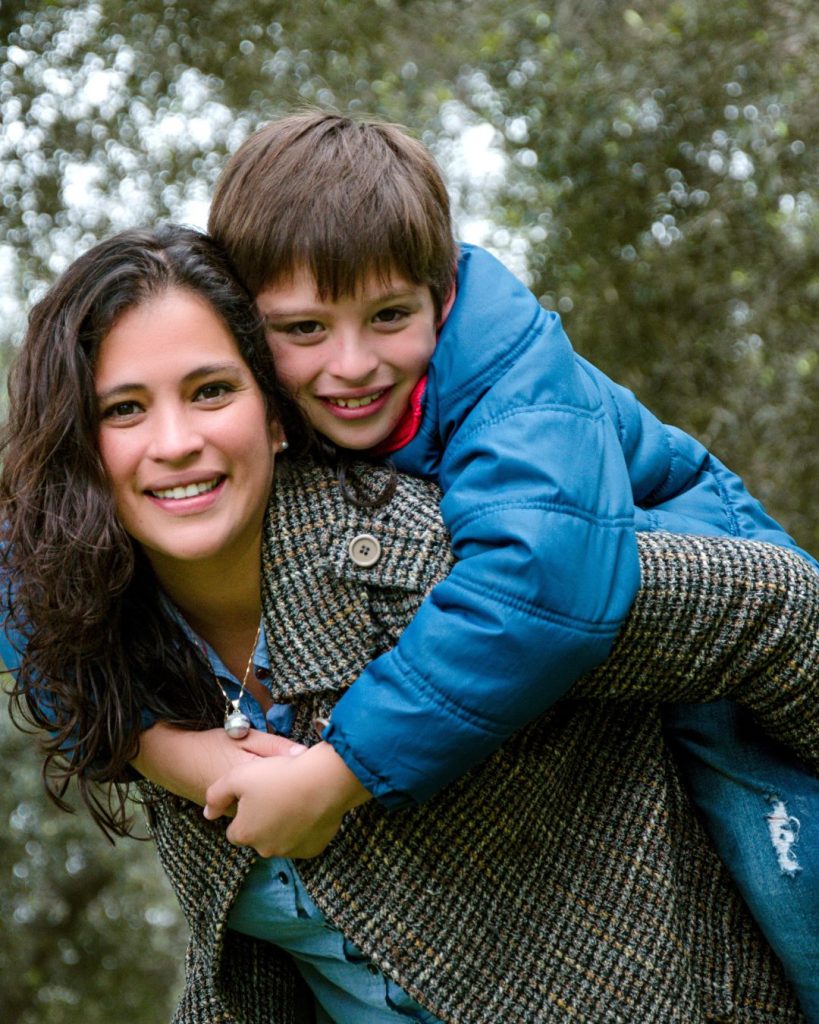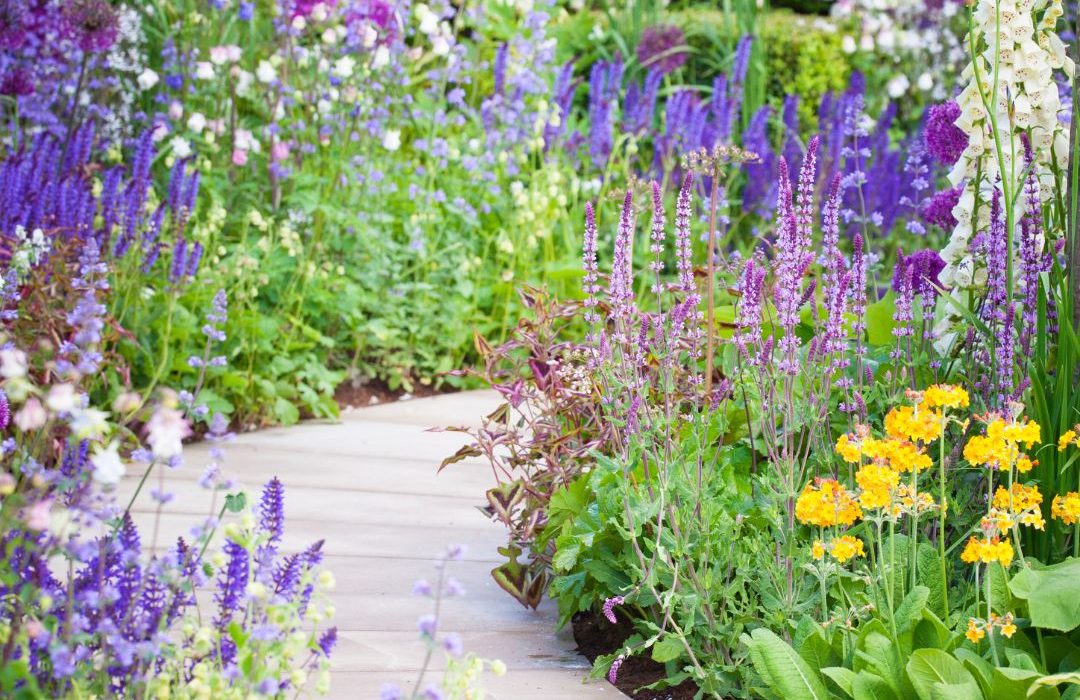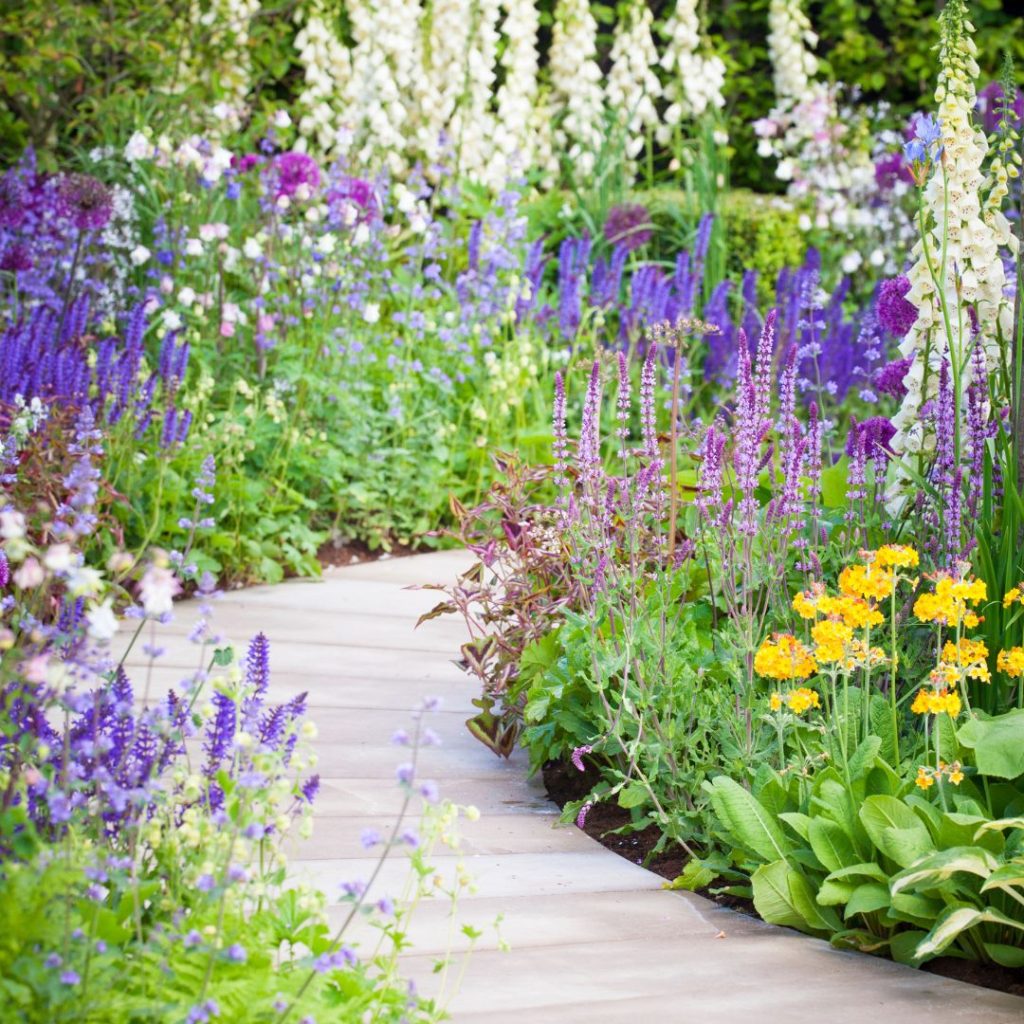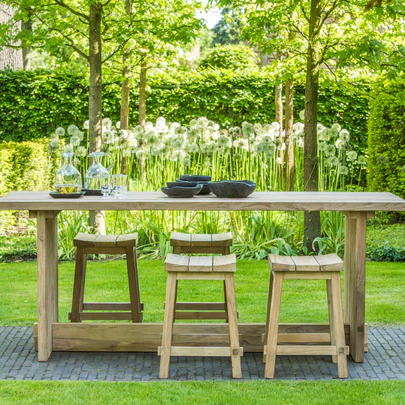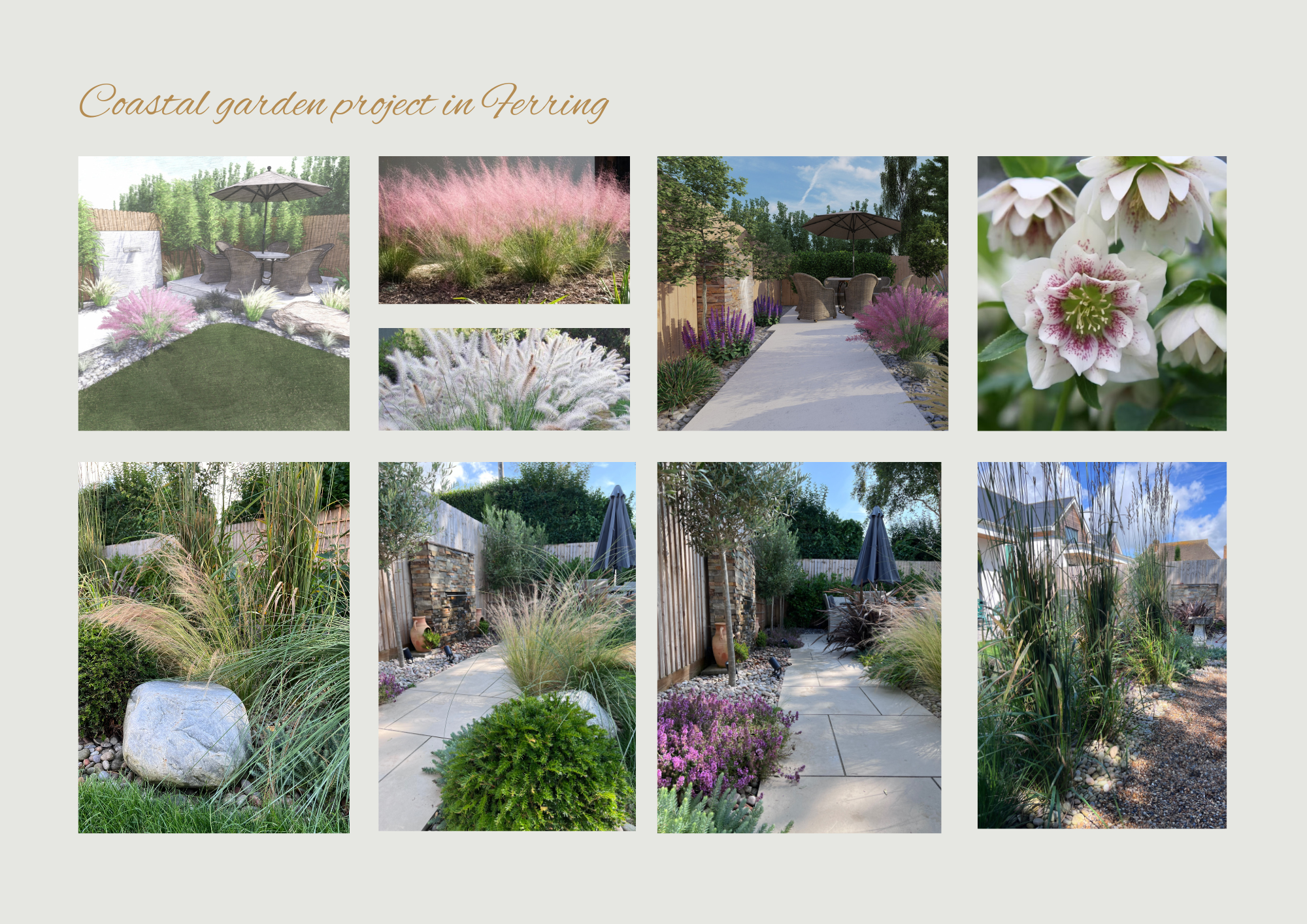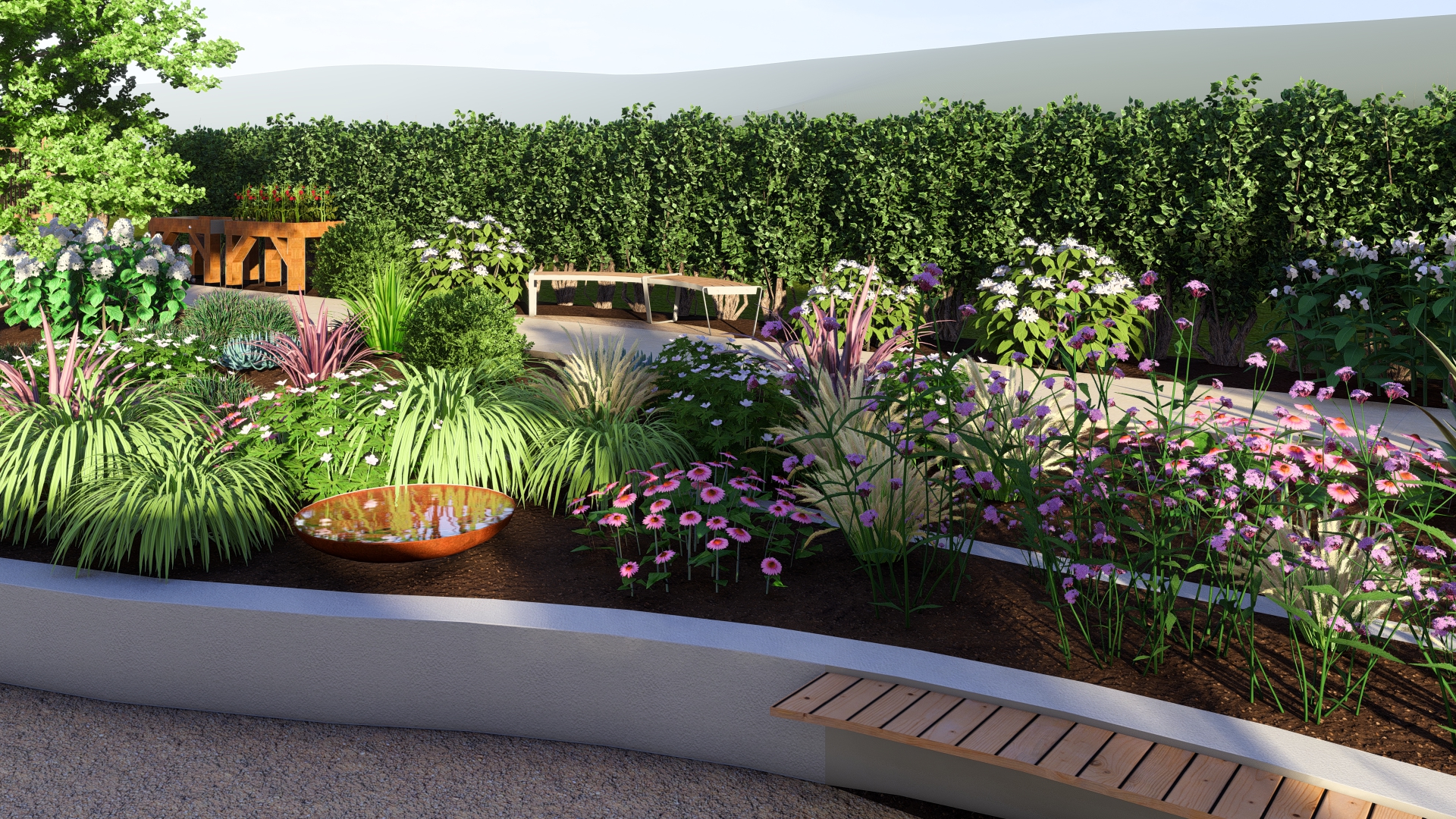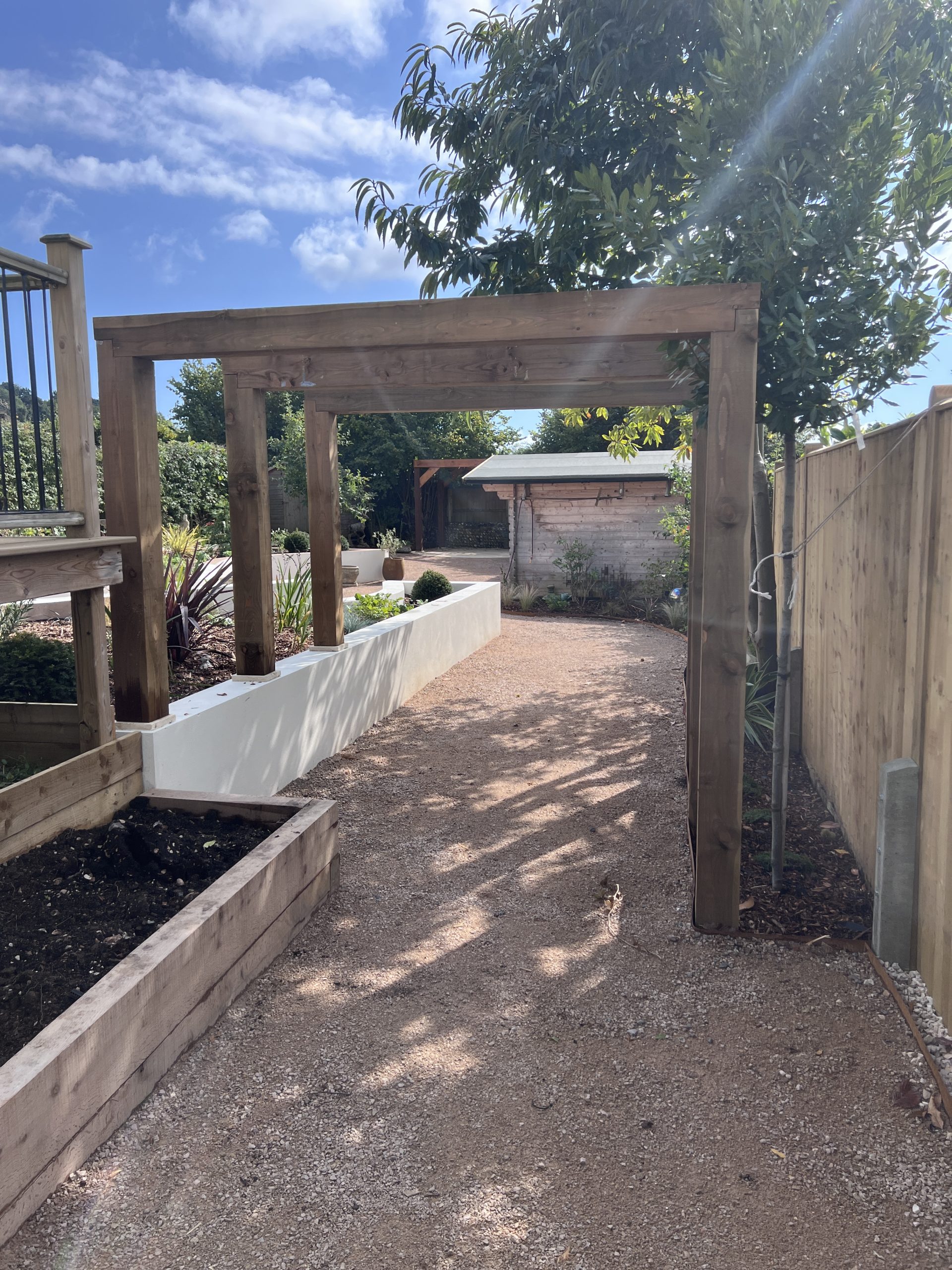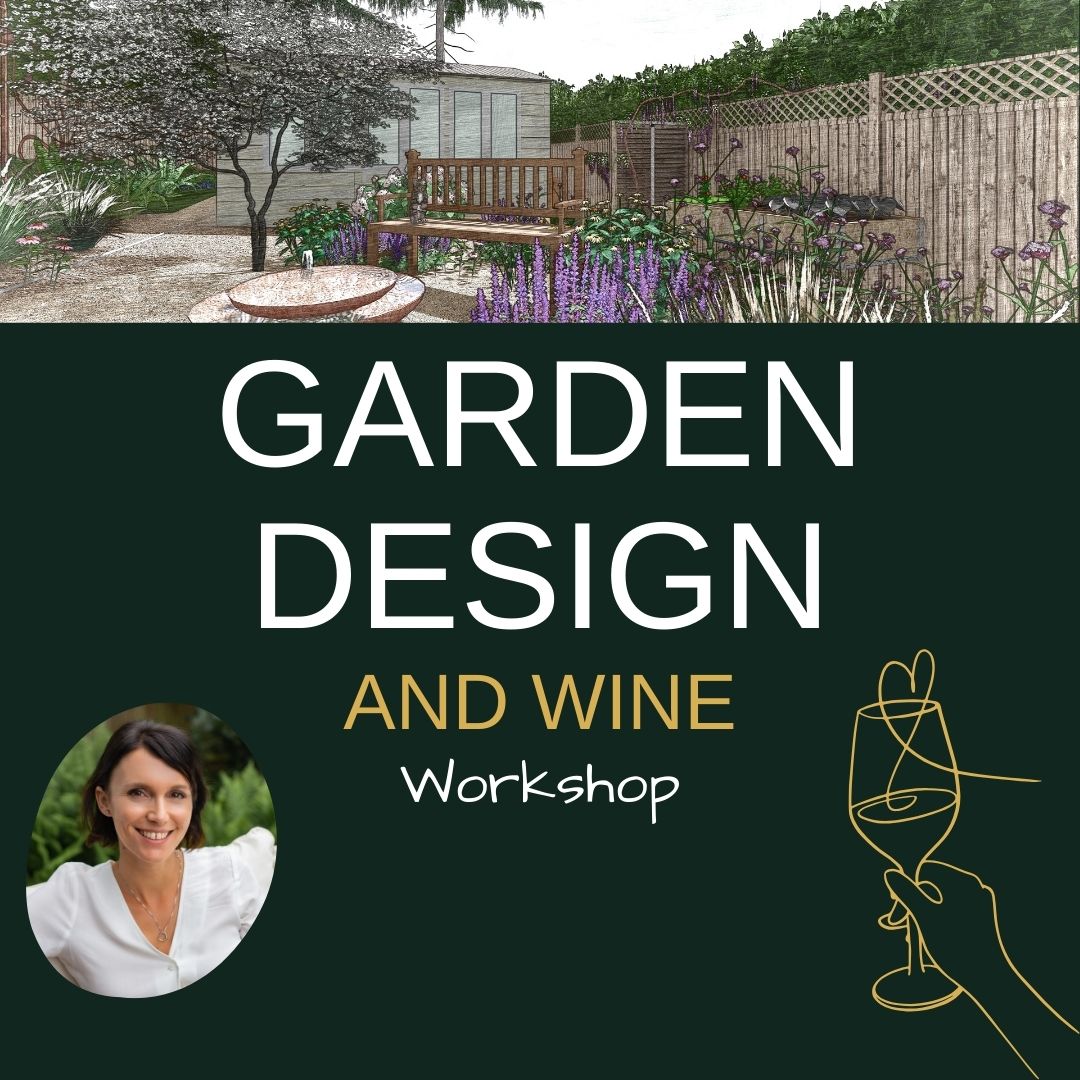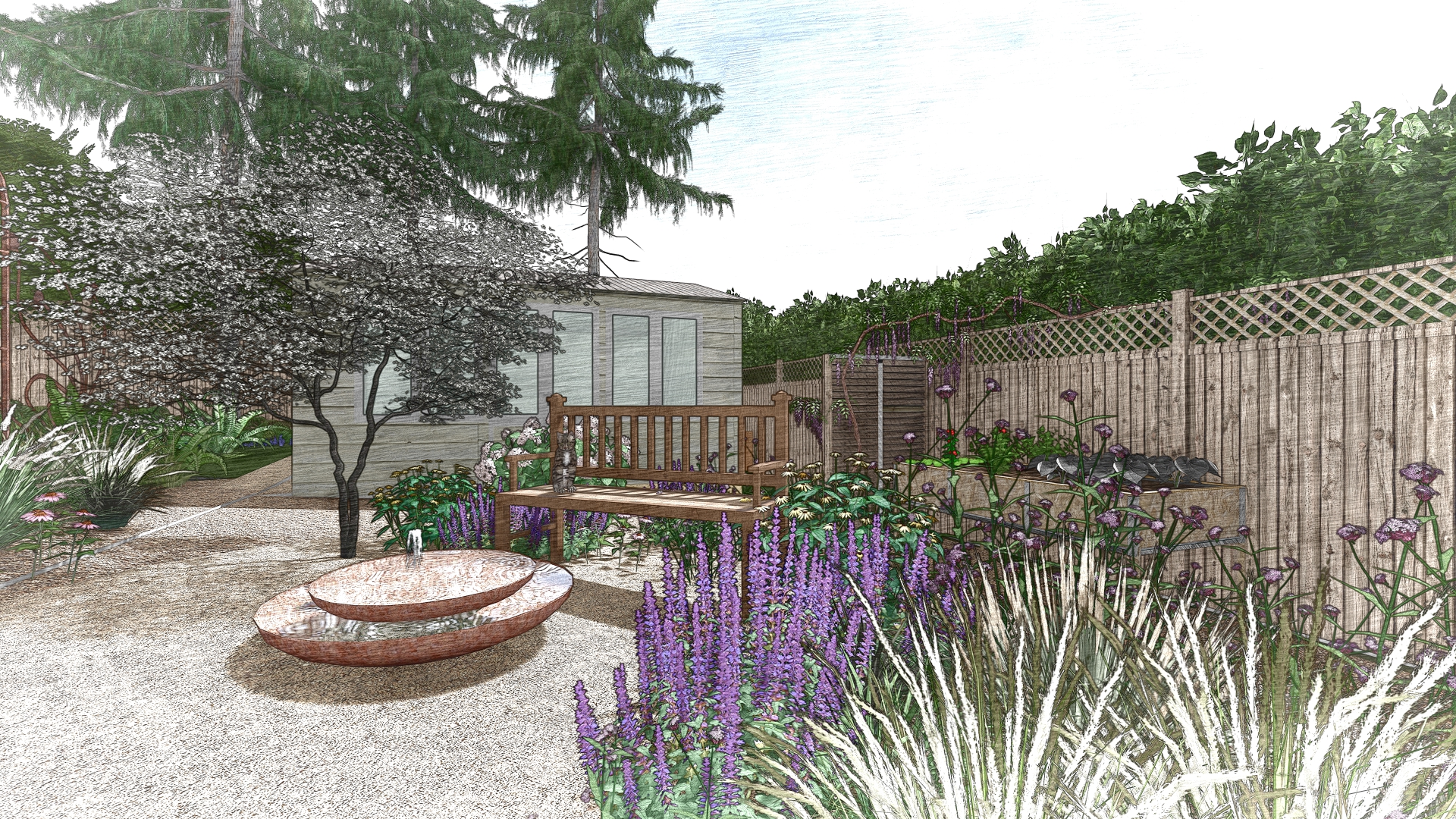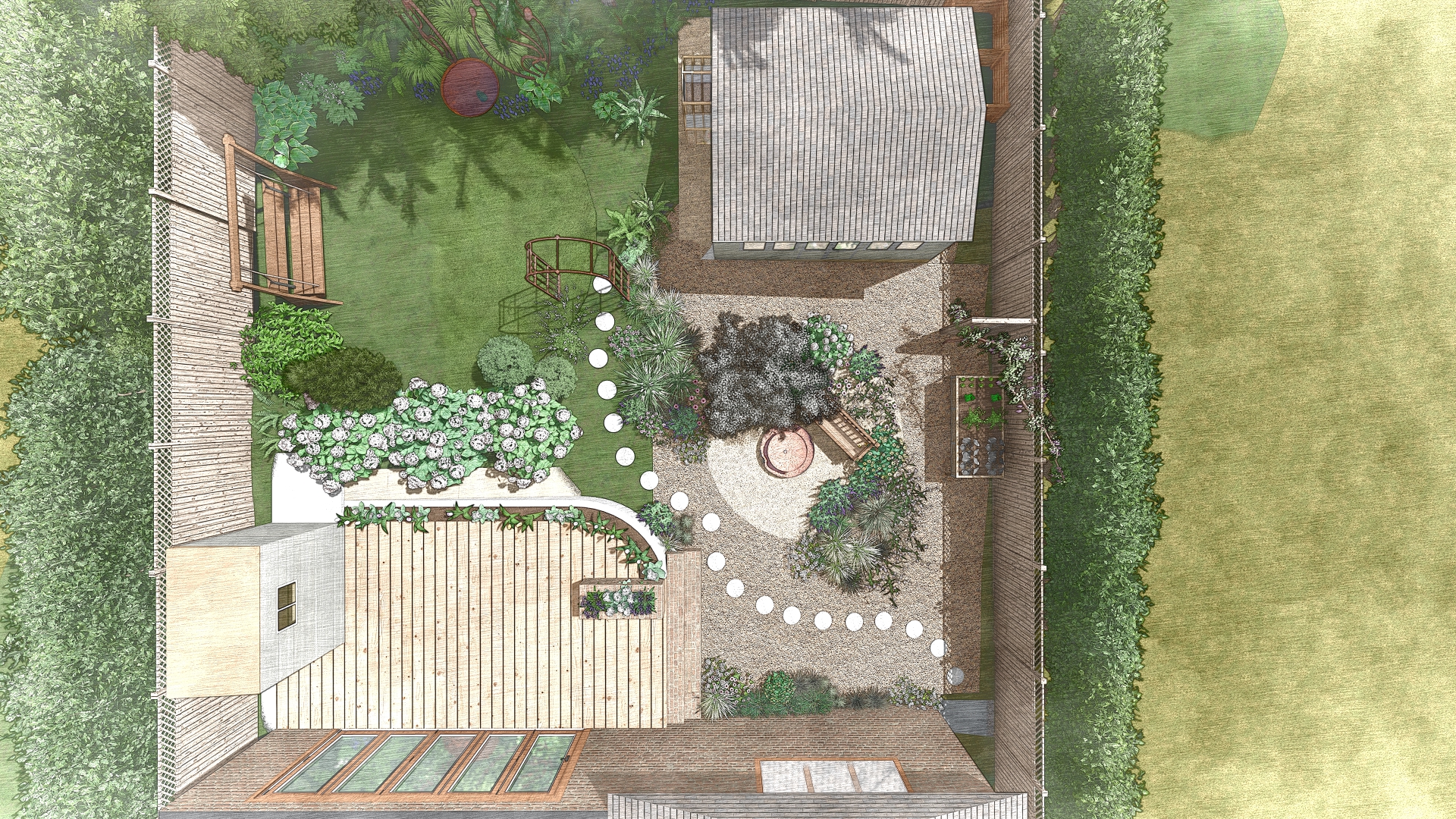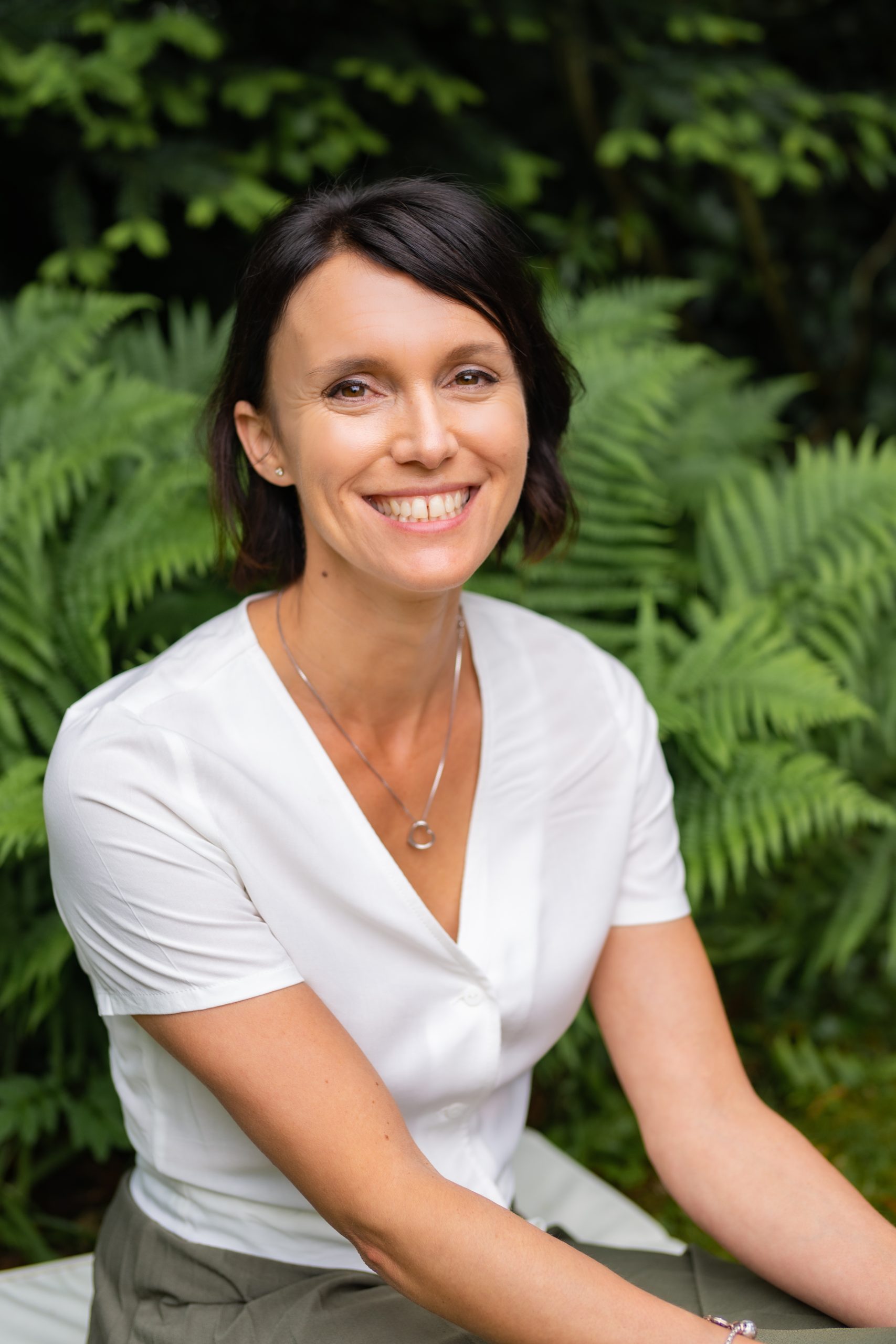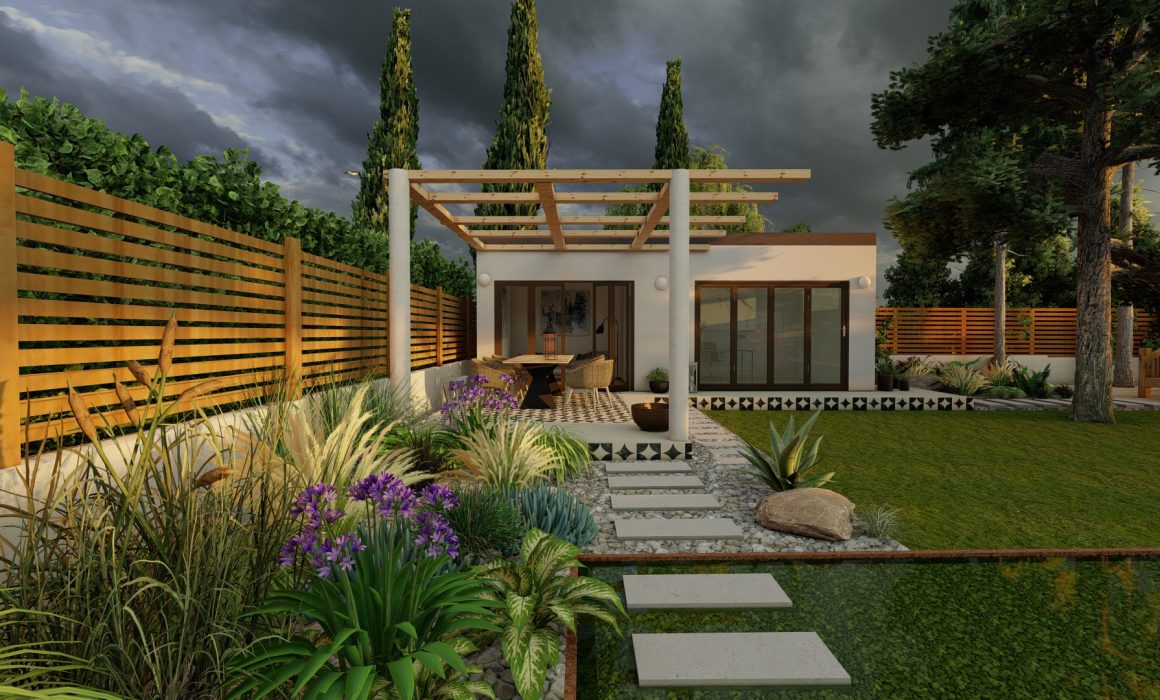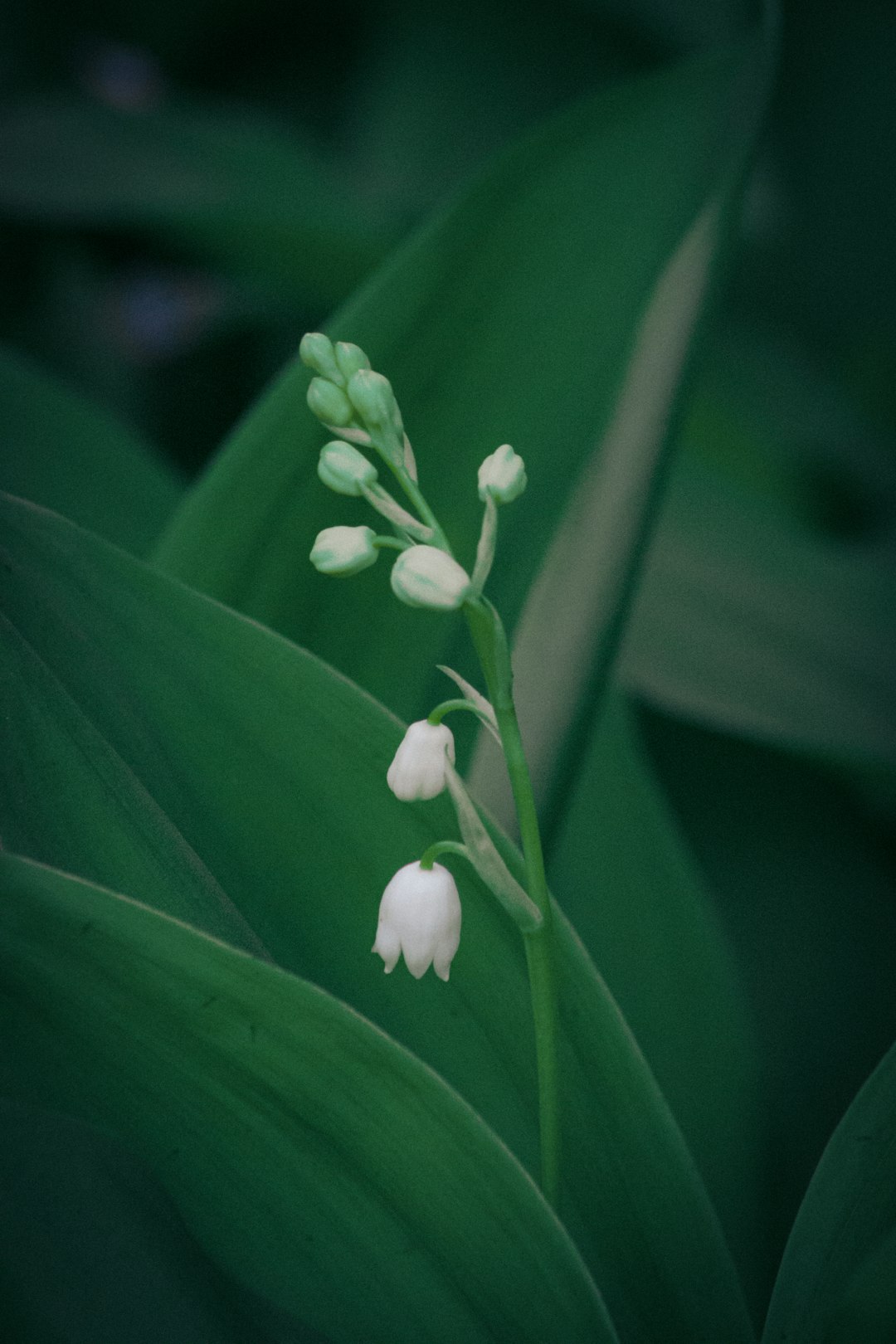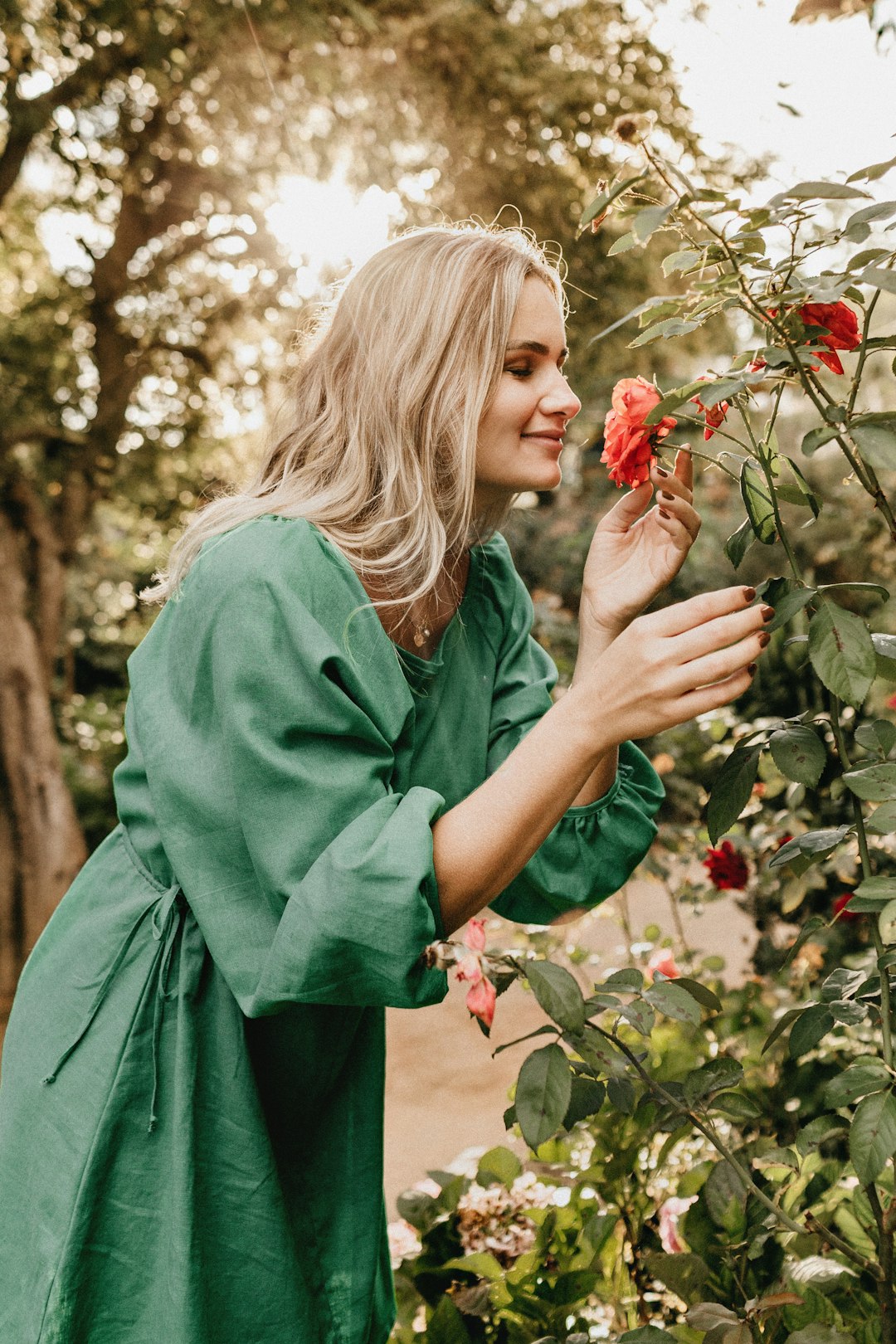Harmonising Outdoor Spaces: The Power of Garden Design and Feng Shui

Garden Design and Feng Shui- A life-changing combination
In the fast-paced rhythm of modern life, our gardens offer us a rare opportunity to pause, reconnect, and breathe. More than just an aesthetic addition to our homes, gardens hold the potential to deeply affect our wellbeing. Integrating Feng Shui principles into garden design can unlock a new layer of harmony, transforming outdoor spaces into sanctuaries of balance and energy.
In this blog post, we’ll explore the synergy between garden design and Feng Shui, and how this ancient art can be thoughtfully applied to contemporary gardens. As a professional garden designer, I’ve found that introducing Feng Shui elements not only enhances the visual impact of a garden but also imbues it with a sense of peace that resonates deeply with clients. I also would like to introduce Lynn Kingdon who balances client’s surroundings with the natural environment to create a more harmonious, comfortable space to live and work.
What Is Feng Shui?
Feng Shui, literally translated as “wind-water,” is an ancient Chinese philosophy centred around the flow of energy – known as Qi (chi) – in our surroundings. Traditionally applied to interiors and architecture, Feng Shui has become an increasingly popular influence in garden design. The premise is simple yet profound: when energy can move freely through a space, it fosters health, happiness, and prosperity.
In a garden, Feng Shui goes beyond symmetry and colour balance. It delves into spatial arrangement, elemental harmony, and the purposeful placement of natural features to align with the energy pathways of the land. It asks us to design not only for the eye, but for the soul. This resonates very well with Studio Hummingbird’s core values.
The Five Elements and Their Place in the Garden
A foundational principle of Feng Shui is the balance of the five elements: Wood, Fire, Earth, Metal, and Water. Each element has a specific energy and symbolic meaning, and they can all be represented through plants, materials, colours, and structures.
- Wood – Symbolising creativity, growth and vitality, wood energy is brought into the garden through plants, trees, and wooden structures. Vertical elements like trellises or tall shrubs also embody this upward, expansive force.
- Fire – Representing passion and transformation, fire is introduced through lighting, red and orange flowers, and even fire pits or lanterns. It adds dynamic energy and warmth.
- Earth – Associated with stability and nourishment, the earth element appears in pathways, terracotta pots, rocks, and earth-toned features. It grounds the space.
- Metal – Symbolising clarity and precision, metal can be integrated through garden ornaments, furniture, or planters. White or grey plants, such as artemisia or lamb’s ear, also represent this element.
- Water – Reflecting calm and abundance, water features like ponds, fountains, or even birdbaths invite tranquillity and encourage the flow of energy.
Balancing these elements does not mean equal representation. Rather, it requires a thoughtful integration based on the garden’s orientation, the owner’s intentions, and the site’s natural characteristics.
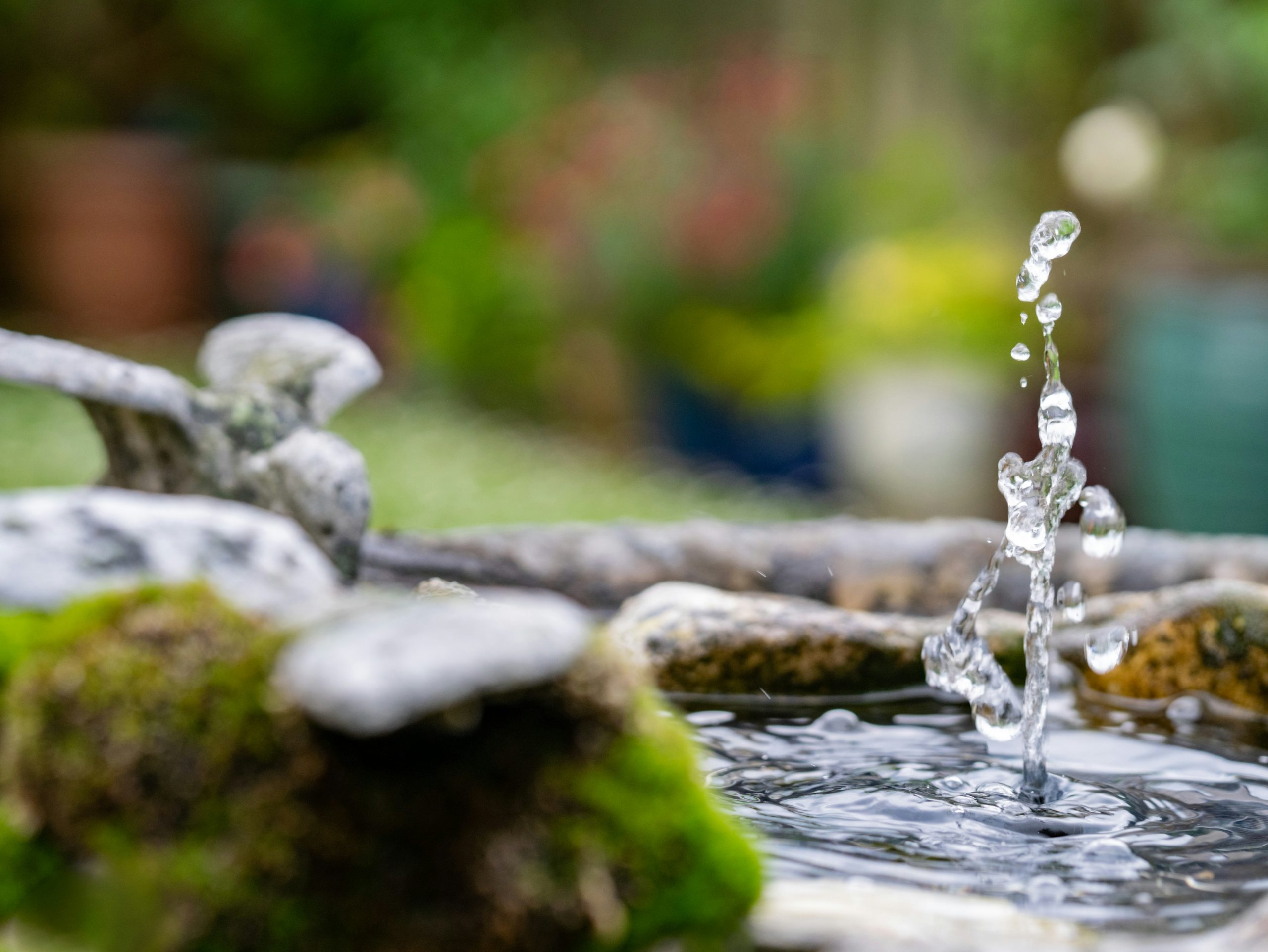
Yin and Yang
Another fundamental principle of Feng Shui is Yin and Yang. These are the two primary forces of the chi energy which surrounds us, they are opposing and yet complementary to one another.
Yin is regarded as a feminine energy, representative of cool, still environments, quiet spaces and dark colours.
Yang is regarded as a masculine energy, more representative of hot and active environments, lively spaces and bright colours.
It is important to achieve a balance between these energies. Different sections of the garden may be designated for different use, and each should have its own balance of yin and yang energies.
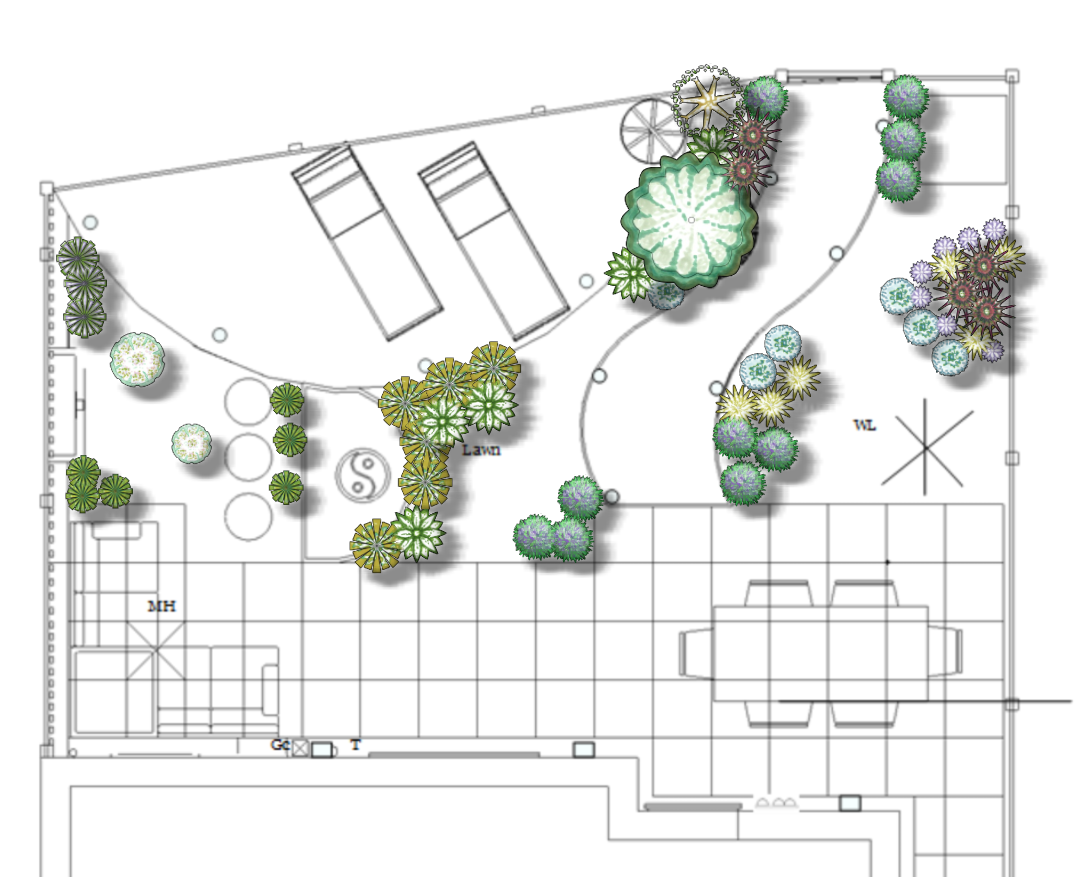
Zones of Energy: The Bagua Map
Another key tool in Feng Shui is the Bagua map – an octagonal grid used to divide a space into nine life areas, including wealth, health, relationships, career, and creativity. Applying the Bagua to a garden allows us to design with intention, placing features where they will energetically support certain life aspects.
For example:
- The South East of the garden (when taken from the centre) corresponds to wealth and good fortune. This is a good place for a lush tree, a water feature, or golden flowers.
- The centre relates to health and unity, ideal for an open lawn or a central gathering area.
- The North West area is linked with helpful people, perfect for a bench or a sculpture dedicated to inspiration.
By mapping out the garden according to the Bagua, we create a space that supports not only visual harmony but also the homeowner’s aspirations and energy.
Flow and Circulation: Inviting Energy into the Garden
In Feng Shui, Qi needs to flow smoothly, not rush or stagnate. This principle has clear implications for how we design pathways, plant beds, and seating areas. Meandering paths are ideal – they guide energy gently through the space, mimicking the curves of a river. Avoid sharp corners or straight lines that can cause energy to “cut” through the garden too quickly.
Entrances and gateways play a crucial role as well. They should feel welcoming, open, and clearly defined. A cluttered or overgrown entrance blocks energy – and visitors – before they even arrive.
In one of our recent projects, a narrow garden in a London townhouse was transformed by replacing a rigid, straight path with a gentle curve lined with herbs and stepping stones. This simple change softened the energy and made the garden feel more expansive and inviting.
Natural Harmony and Sustainable Choices
At the heart of both Feng Shui and good garden design lies a deep respect for nature. Using sustainable materials, supporting biodiversity, and planting with the seasons all contribute to a garden that not only looks good but feels right.
At Studio Hummingbird, we are increasingly seeing clients asking for pollinator-friendly plants, natural ponds, and low-impact materials. This aligns perfectly with Feng Shui principles, which encourage working with nature rather than imposing upon it. Living roofs on sheds, bee hotels, and even small wildflower meadows offer ways to welcome both wildlife and positive energy.
I often encourage clients to walk their gardens at different times of day, sit quietly in various spots, and listen to how the space makes them feel. This feedback loop between the designer, the client, and the land itself is where the most magical transformations occur.
Inspiration from Lynn Kingdon
For those wishing to dive deeper into the intersection of Feng Shui and holistic living, I highly recommend exploring the services of Lynn Kingdon. Get to know Lynn and her work here: https://lkfengshui.co.uk/about-me/.
Lynn offers a wealth of insights into therapeutic interiors, space clearing, and the deeper connections between people, places and wealth and prosperity.

Practical Tips for a Feng Shui-Inspired Garden
To bring Feng Shui into your own garden, consider these simple but effective steps:
- Declutter: Remove broken pots, dead plants, or unused furniture. Clear space invites fresh energy.
- Create a clear, welcoming entrance: This sets the tone for the energy entering your garden.
- Add a water feature: Even a small water bowl can enhance calm and abundance, and a bird bath attracts wildlife into the garden, introducing a natural flow of energy.
- Use colour intentionally: Warm tones for energy, cool tones for relaxation.
- Introduce curves: Soften paths and beds to encourage gentle energy flow.
- Incorporate all five elements: Ensure your garden supports holistic balance.
- Design with purpose: Think about what areas of your life you’d like to nourish and reflect that in your layout.
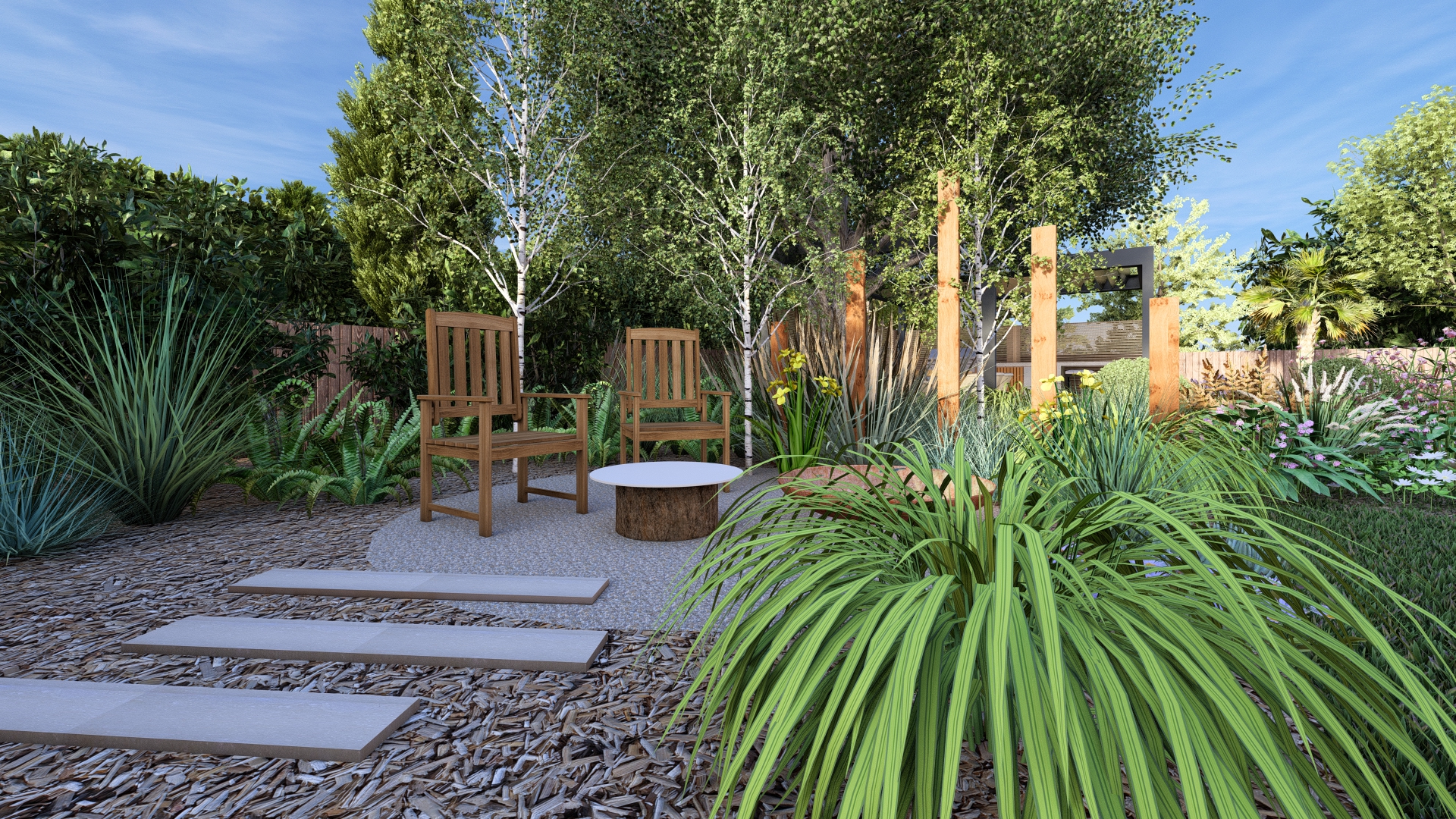
The most successful gardens are not merely beautiful – they are felt. They resonate with something deep within us. By integrating the time-honoured wisdom of Feng Shui with the practical artistry of modern garden design, we can create spaces that are not only stunning but soulful.
Whether you’re redesigning a compact urban courtyard or cultivating a stunning country retreat, these principles offer timeless guidance. With intention, harmony, and a little inspiration from nature, your garden can become a true sanctuary.
Ready to transform your outdoor space into a sanctuary of harmony and beauty?
At Studio Hummingbird, we’ve partnered with Feng Shui expert Lynn Kingdon to offer an exclusive, bespoke Feng Shui garden design service. Together, we blend timeless Eastern wisdom with elegant, contemporary design – creating outdoor spaces that don’t just look stunning but feel deeply nourishing and energetically aligned. Find out about our exclusive Feng Shui Garden Harmony Package by clicking the button below.


